What to plant in January: 14 flowers and shrubs to add to your garden this month
Our list of what to plant in January will get you ready for a beautiful display this year – including bare root perennials and top seeds to sow

Ruth Hayes
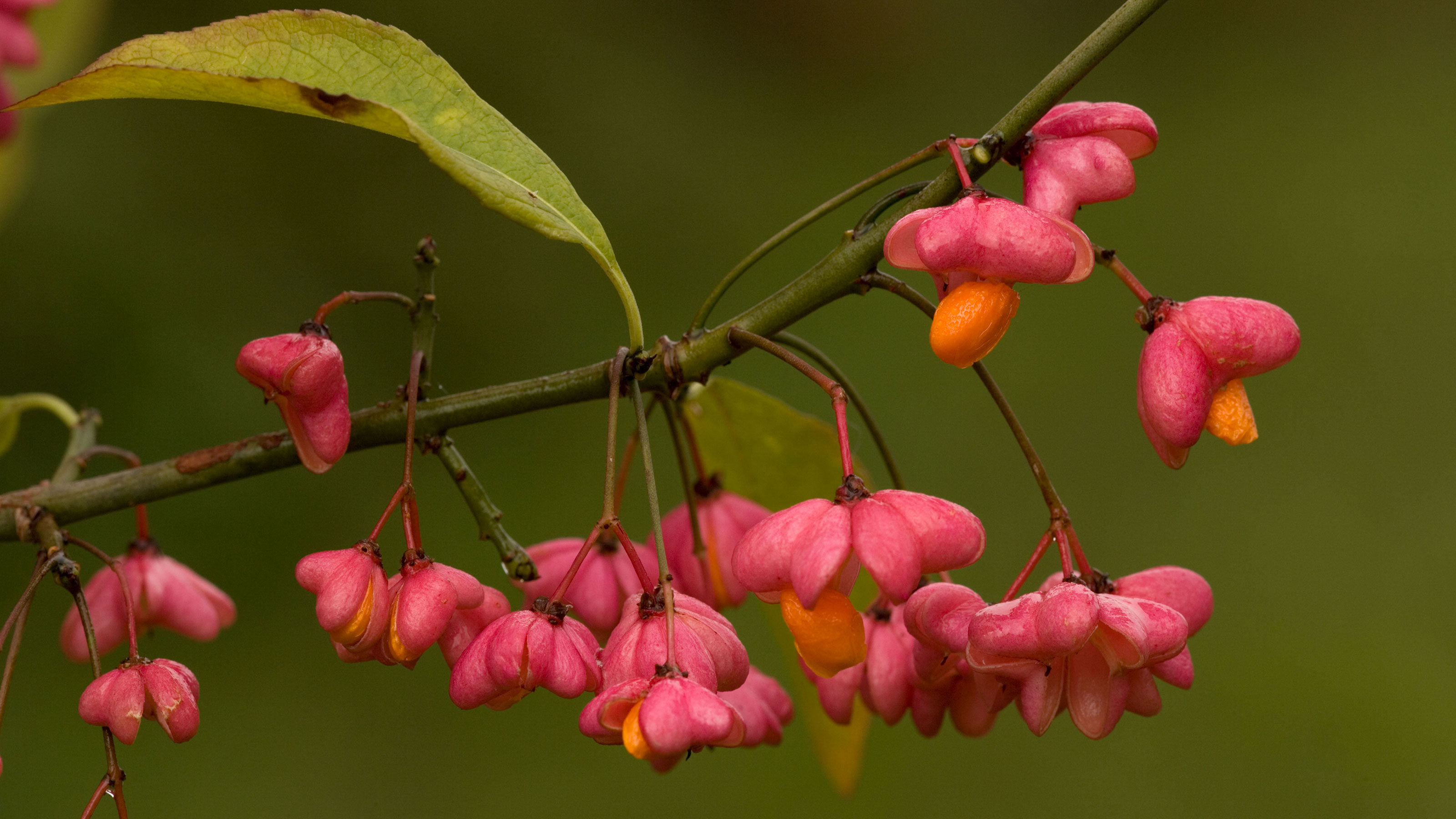
Thinking about what to plant in January can come as something of a relief after weeks when most of us have been thinking about little else than what presents to buy, how much to cook and how many people can we fit around one dining room table!
If you’re anything like us, you often feeling slightly relieved that the end-of-year festivities are done and it’s time to get back to normal and look forward to warmer days and sunshine. So what better way to raise the spirits than by starting to sow and plant our favourite varieties in anticipation of balmier days
When thinking about what to plant when, January is traditionally the month when you can start looking at ornamental varieties. Growing summer flowers from seed is economical and easy and often gives you a larger range of varieties than if you were buying young plants.
Nothing lifts the spirits like getting outdoors and sowing a few seeds, or planting a perennial or two to add instant color to the borders. And, if you love the thought of bringing a rose to your flower beds this year, now is a great time to get them in the ground.
We've rounded up the top choices of what to plant in January, plus plenty of advice on how to grow them successfully.
Prepare your plot for its best year yet with our list of what to plant in January
From structural shrubs to beautiful blooms to sow from seed, this round-up has all kinds of gorgeous picks for planting this month. However, low light levels and temperatures can make it harder to germinate strong seedlings so it pays to invest in a heated propagator.
These are relatively cheap to buy and are widely available online. 'I have a Sankey Growarm 100 (available at Amazon in the UK), and in the US a VIVOSUN Heating Seedling Starter Germination Kit will cost you less than $40 on Amazon,' says gardening editor Ruth Hayes.
Another option is to place seed trays on a light windowsill in a warm room and fold kitchen foil around the tray to reflect and brighten light levels.
1. Dahlias
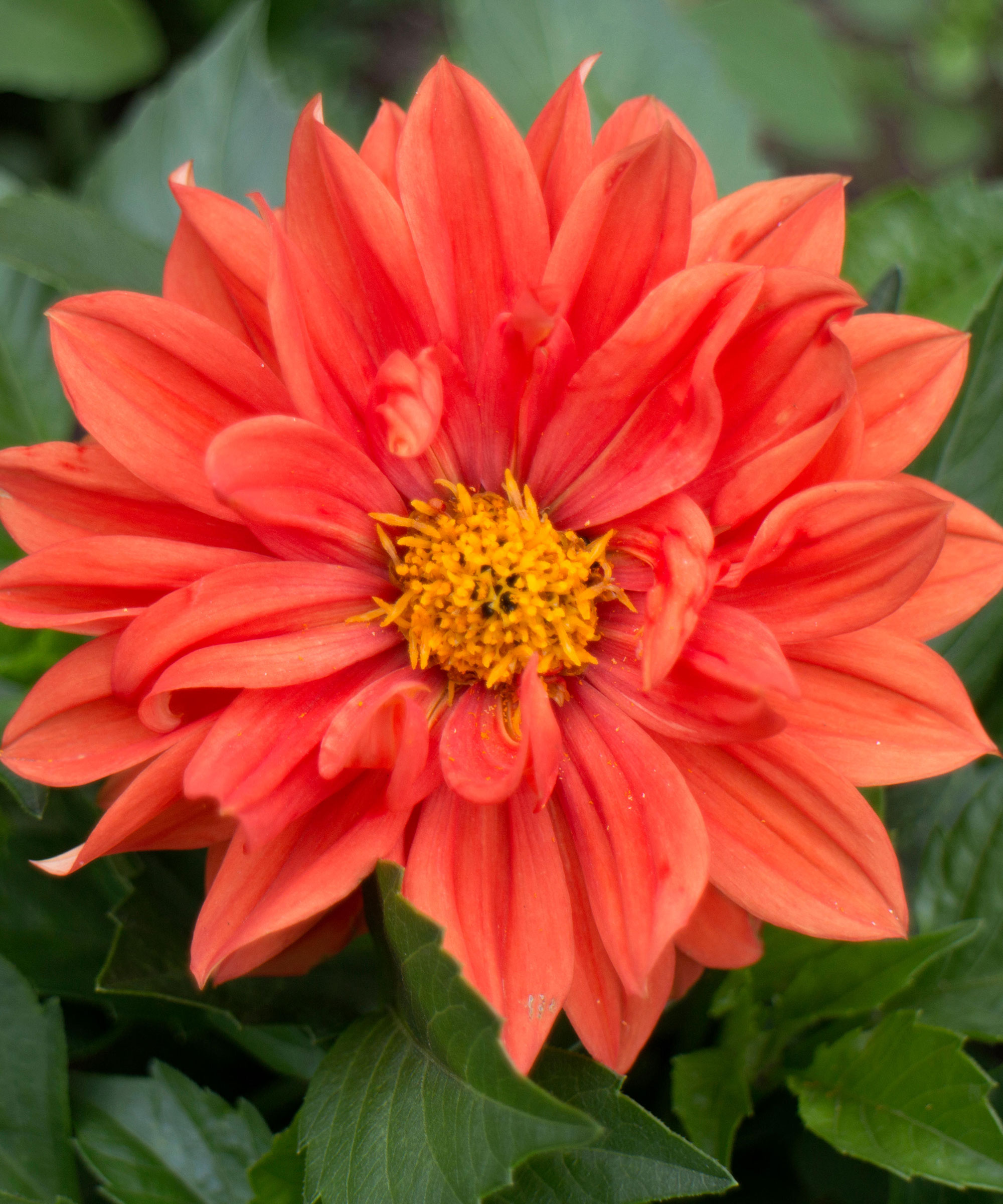
Thought dahlias could only be grown from tubers? Then think again! Bedding dahlias are grown from seed, but their roots will start thickening into tubers by the fall of their first year, so with care they can be lifted and stored through winter then restarted again the following spring.
You can also save the seeds from your own mature dahlias plants at the end of summer, though they may not grow ‘true to type’, unlike plants propagated from cuttings.
Sow bedding dahlia seeds in trays or modules of fresh seed compost that’s been dampened by tap water. Cover the modules or tray with a lid and set them in a heated propagator or on a light windowsill in a warm room.
Seedlings should appear in 2-3 weeks and can be potted up in individual containers of multipurpose when the first two sets of ‘proper’ leaves, rather than the round germination leaves, have formed.
Top tip: Dahlias are not frost hardy so delay planting them out until night temperatures are reliably above zero.
2. Petunias
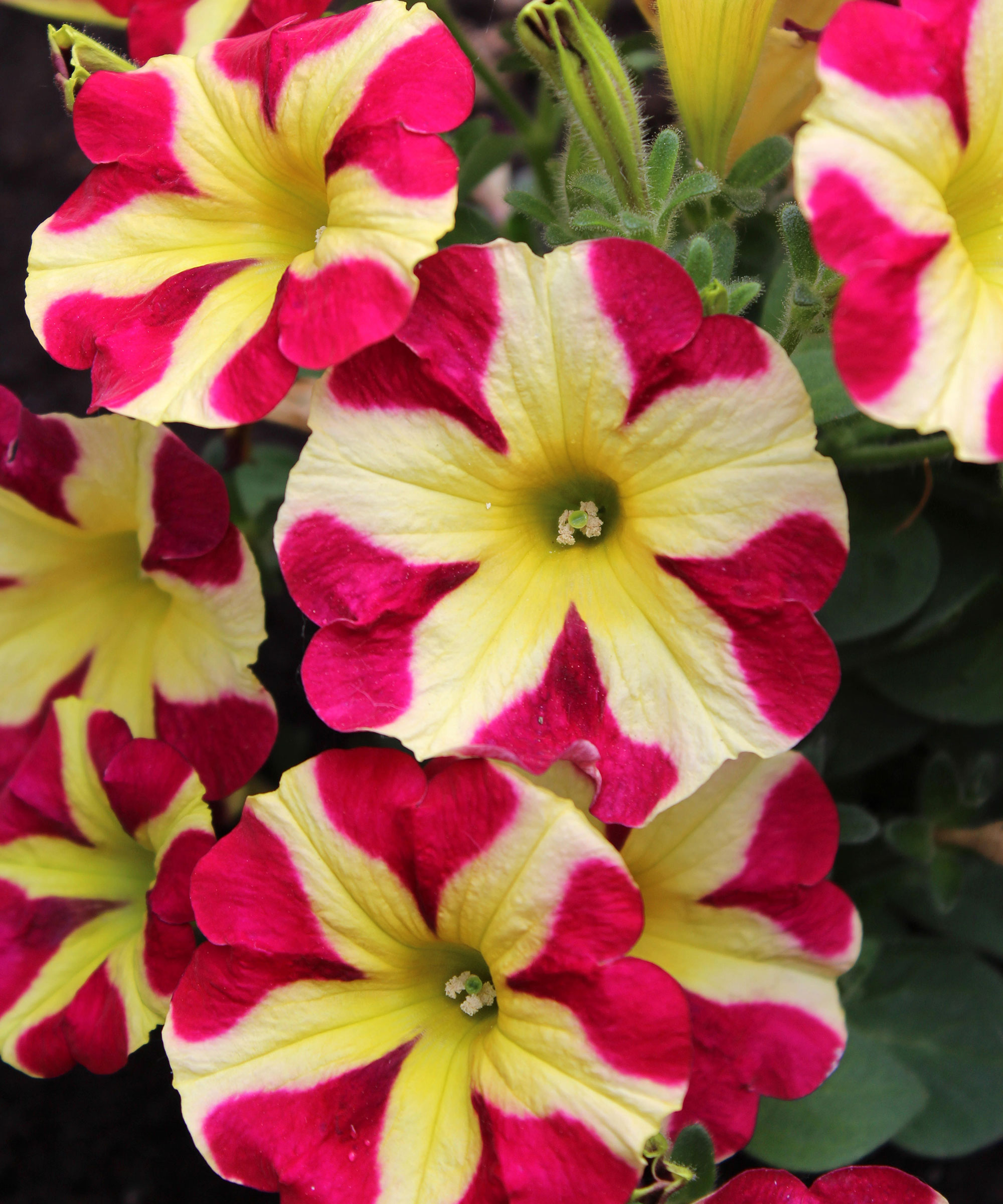
I always feel that summer container ideas, hanging baskets and window boxes look incomplete without cascades of petunias spilling down their sides.
These trumpet-flowered wonders come in a crazy range of colors and patterns, from plain to speckled and striped (the variety ‘Stars and Stripes’ is one of my favorites). And don’t forget surfinias, trailing petunias with slightly smaller flowers and greater weather resistance.
Petunias and surfinia are not the easiest plants to start from scratch because their seeds are tiny and need careful handling and sowing. However, this is a purse-friendly form of propagation and definitely worth your while.
Start by filling a tray of fresh seed compost, then tamp it flat to create a firm seedbed and so the seeds are less likely to be lost down crack or under lumps of compost.
Sow the seeds thinly. Because they are so fine I find it easiest to dampen the top of a matchstick, pick up a few and then tap them off around the compost. A dampened fingertip does just as well, as does mixing seeds with a little horticultural sand so you can sprinkle them more evenly.
Now – and this is important – do not cover the seeds with compost or vermiculite as they need light and air to germinate. Cover the tray with a lid and pop it onto a light, warm windowsill or into a heated propagator.
Top tip: Make sure you keep the compost damp throughout the germination process. Because the seeds are so small and should not be disturbed, I find it easiest to stand the tray in a bowl of water so it absorbs the moisture from below.
3. Calendula
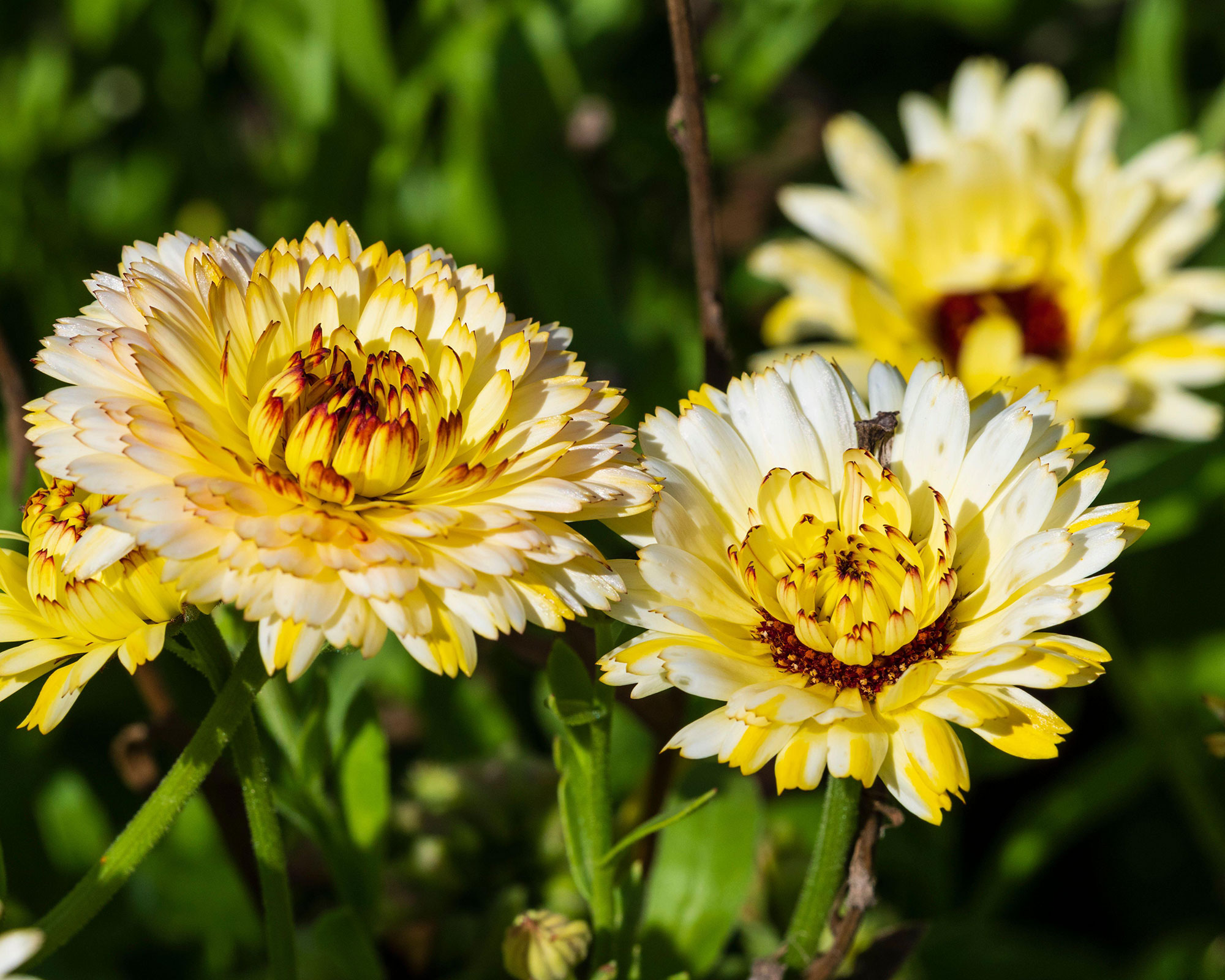
Calendula, or pot marigolds, are such sunny, easy going plants it seems a shame not to grow them each year. Their radiant open faces bring so much joy and being hardy annuals, if they are in the right spot they can flower almost right through winter too.
Not only are they beautiful, calendulas are useful and they are often used for companion planting, luring pests away from crops and attracting adult hoverflies and lacewings whose larvae prey on aphids.
There are so many calendula varieties in a wide range of colors, from plain bold orange and yellow to more subtle apricot and pale varieties such as ‘Sunset Buff’ and ‘Snow Princess’. Some varieties have double petals and ‘Porcupine Yellow’ has spiky petals similar to some dahlias.
Sow the seeds thinly in soil that has been cleared of weeds and debris and raked to a fine tilth. Cover them with more soil, water and add a label so you don’t disturb them.
If you have sown them too thickly you can thin the seedlings when they are large enough to handle.
Top tip: Pot marigolds are not the same as tagetes or French marigolds, which have smaller flowers in burned shades of orange, red and gold. These also make attractive companion plants.
4. Spindle trees
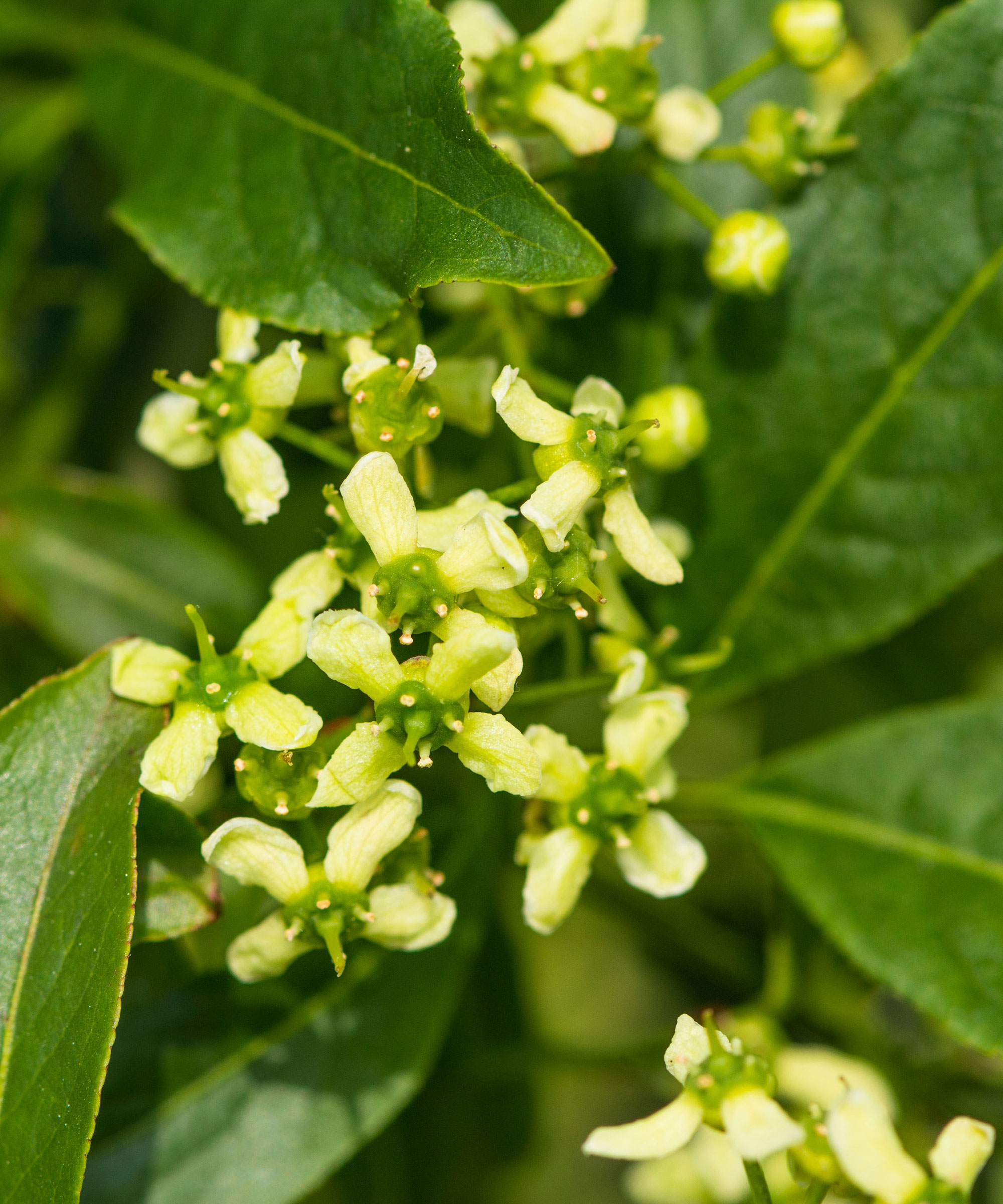
We are still in the bare root planting season, the ideal time to add trees and shrubs to your garden without the expense of buying container-grown specimens.
A favorite is Euonymous europaeus. The spindle tree is a native British tree that is worthy of stand-alone status in the garden but also a valuable addition to a native hedge.
Spindle trees acquired their name because their hard pale wood was used to make spindles for holding spun wool, as well as toothpicks, pegs and knitting needles. Folklore has it that if spindles flowered early, the plague was on its way.
The trees lose their leaves in fall, but not until they have turned a captivating burnished color that illuminates the garden in the low rays of autumnal sunlight.
In spring their branches are swathed in small white star-shaped flowers and in fall they produce clusters of unusual pink-and-orange berries.
Euonymous europaeus does best in chalky soil and if buying bare root trees should be planted at the same depth as the muddy ‘tide mark’ around the stem. Container-grown trees should go in the ground at the same depth as their rootball.
Water generously after planting and mulch over the root area to hold moisture in the soil and suppress weeds.
5. Hellebores

Hellebores are 'ideal for adding some winter color to your beds and borders,' says the team at Squire's Garden Centres. 'Most are evergreen and available in an array of colors that come up each year.'
They're also a good choice if you're looking for wildlife garden ideas to give nature a hand throughout the colder months. Gardening expert Sarah Raven says, 'Bumblebees seem to come out of hibernation straight into the embrace of the nectar-rich hellebore flower.
'Slate-crimson "Maestro" is a favorite,' she adds. It's glamorous in the garden and in containers, but it also makes excellent cut flowers if you choose the more mature stems and sear them for ten seconds in boiling water.
'Hellebores are a mainly woodland plant, so tend to thrive in full or partial shade. Give them a good soak before planting out and mulch with compost or leaf mold,' Sarah says.
6. Narcissus

Learning how to force bulbs indoors will enable you to enjoy beautiful blooms over Christmas and New Year. And if you've chosen narcissi as part of your display, you can plant them outdoors afterwards, once the flowers have faded.
'Not Paperwhites, but any hardy varieties like "Silver Chimes" – an incredibly elegant, highly scented narcissus,' says Sarah Raven. 'Remove the spent flower heads to prevent seed production and feed them with a high potash fertilizer to help build up next year's flower buds.
'Continue feeding regularly until the foliage has died back. Narcissi are hardy perennial bulbs, so with proper planting and care they will come back every year.'
7. Snapdragons
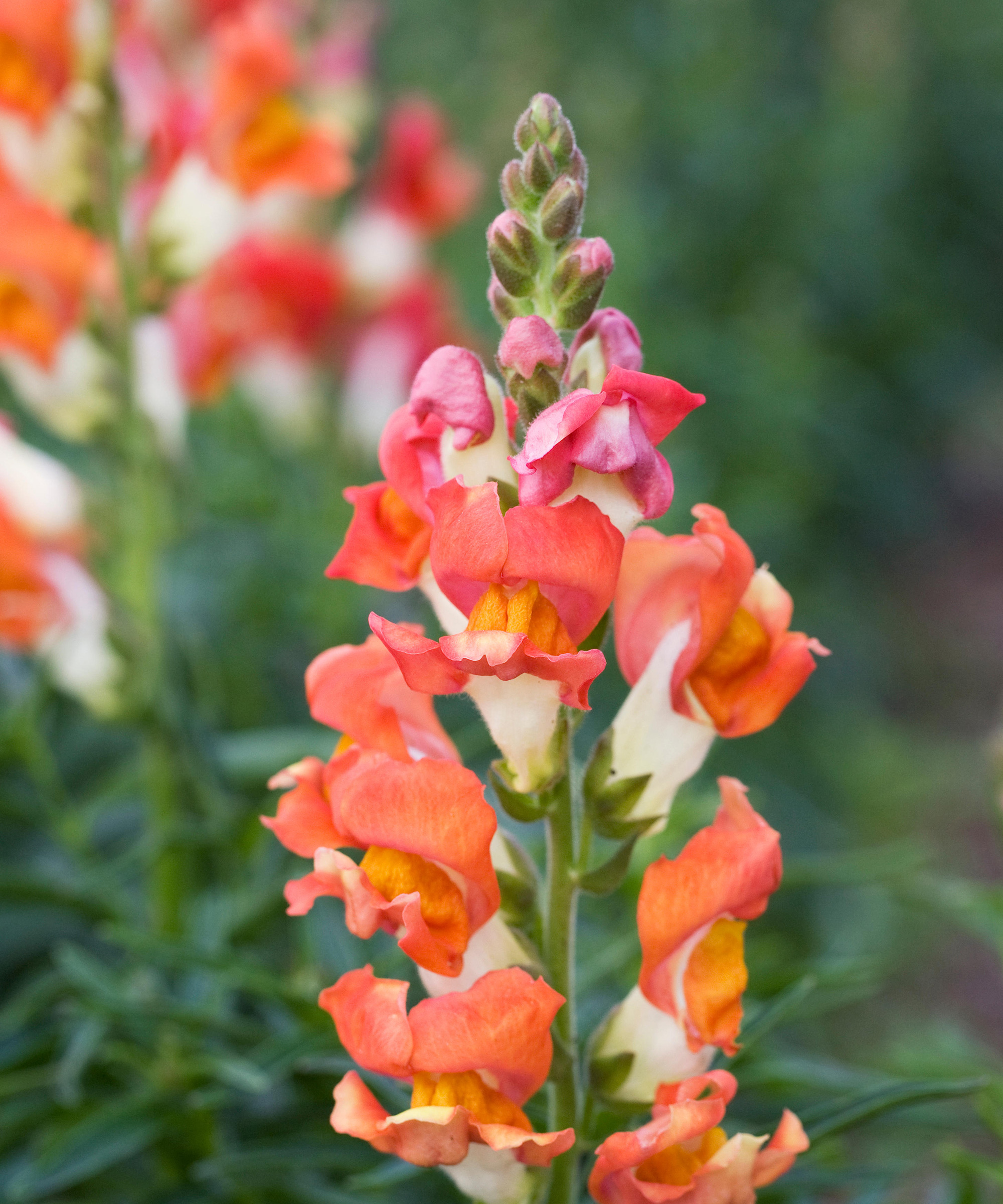
'Certain plants, such as antirrhinums (snapdragons), are grown as half-hardy annuals, but strictly speaking, are tender perennials,' says Sarah Raven. They're a well-loved choice when planning cottage garden ideas.
She explains how they have a long growing season and can take up to 20 weeks from seed to flower. If you get going with your seeds now, they should flower from June onwards.
"'White Giant' is our top-selling favorite, with pure white, statuesque flowers,' Sarah continues. 'They germinate best in moist compost at around 70˚F (21˚C), so use a propagator or heated mat.'
Keep them in a frost-free cold frame until warmer weather comes around – usually in April–May.
8. Sweet peas
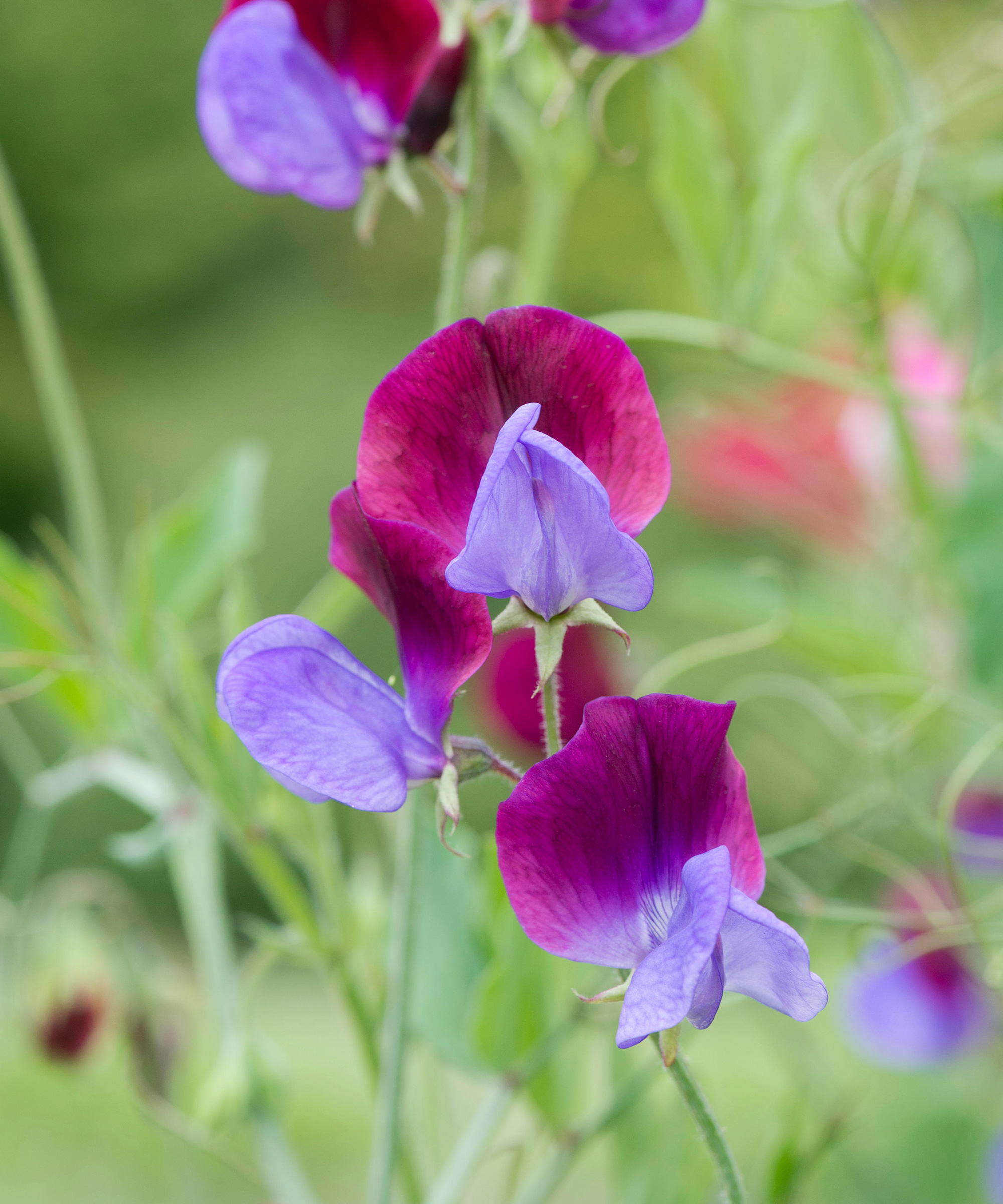
Nothing says early summer in the garden like the beautiful scent of sweet peas. 'We sow sweet peas under cover just after Christmas,' says Sarah. 'Sown now, they'll give you earlier flowers in greater numbers and a longer season.
'"Matucana" is the bi-color magenta and purple sweet pea classic, against which we measure everything else – particularly scent – in all our sweet pea trials. For intense scent and beauty, you cannot beat it.
'Sweet peas thrive with a long root run, we recommend sowing them in deep pots or Rootrainers,' Sarah continues. 'Water the compost and then push a pair of seeds in to about an inch below the surface. Cover with newspaper to keep moisture and warmth in and light out. Some heat will speed up germination but is not essential. They'll germinate in about 10 days.'
9. Camellia
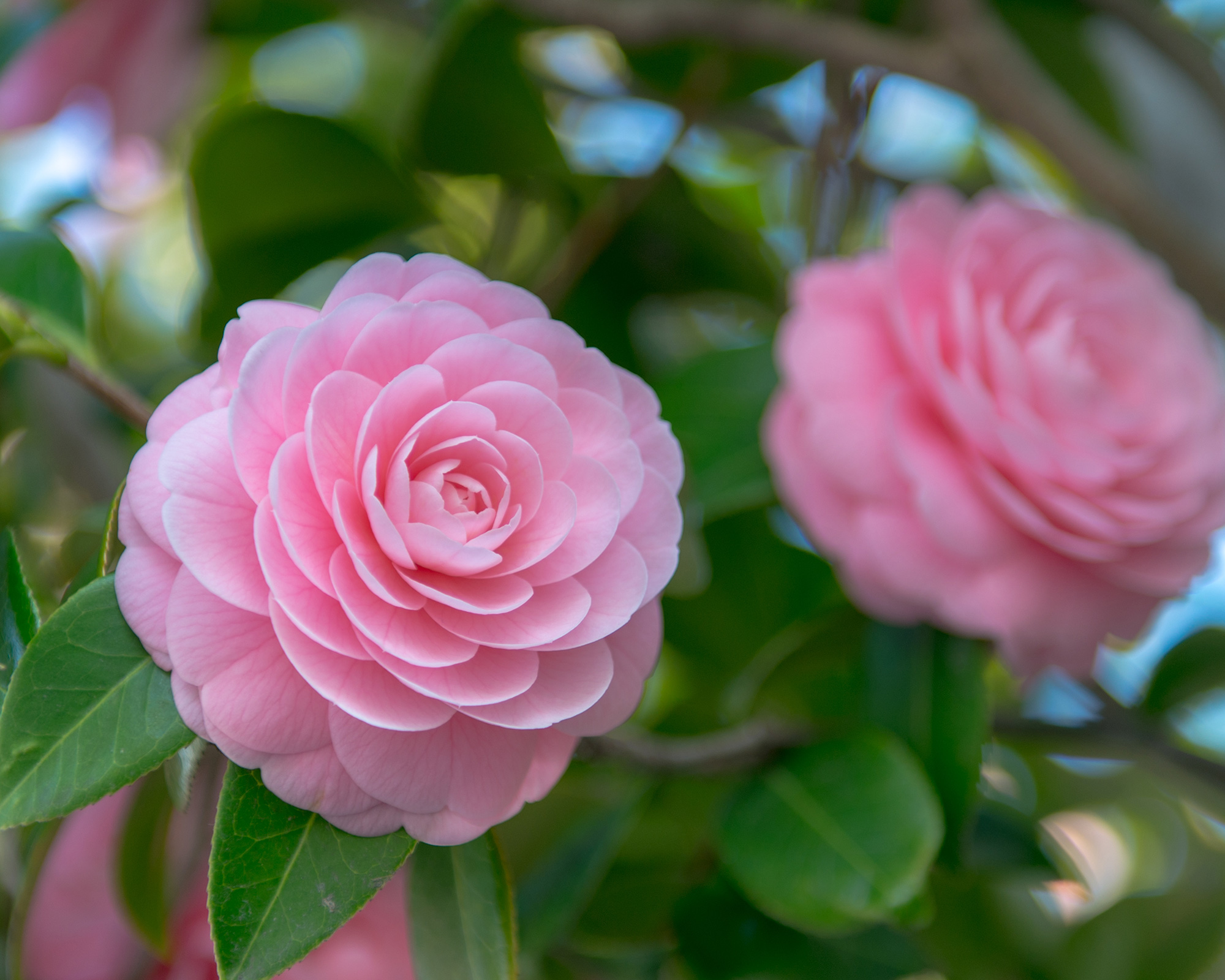
Camellias are on Squire's Garden Centres' list for what to plant in January, and for good reason. These evergreen shrubs have beautiful flowers appearing from early spring onwards, and there are so many types of camellias available in an array of colors, including bright white and bubblegum pink.
They are 'perfect for pots,' says the team, but they can be planted in the ground too. They like partial shade, an acidic soil type, and a sheltered position. Water newly-planted camellias regularly, ideally with water from a water butt, and deadhead flowers as they fade to keep it looking its best.
10. Cathedral Bells
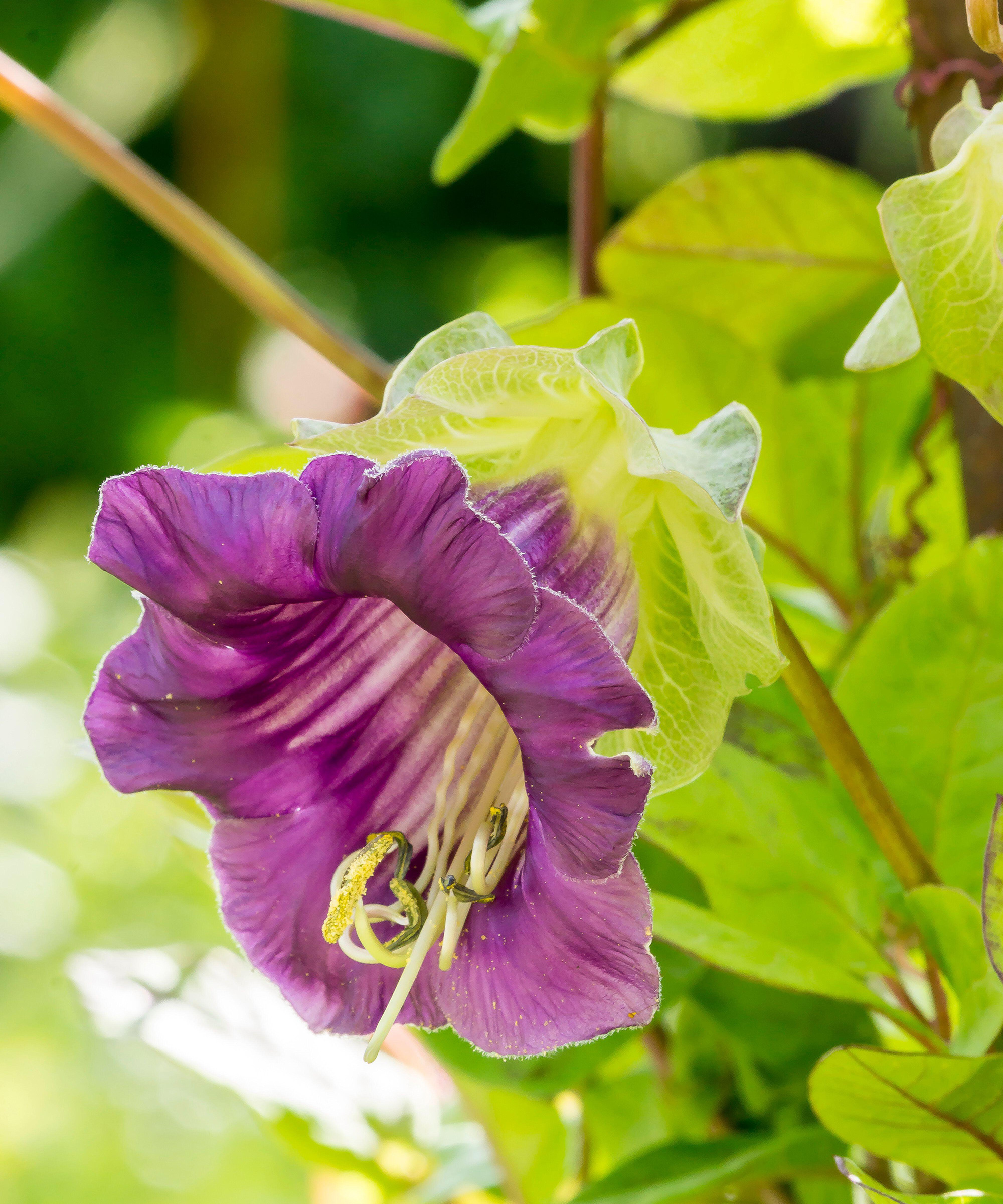
Now is the best time to sow the seeds of climber plants such as Cobaea scandens (cathedral bells), which need to get to a good size before flowering, says Sarah Raven. 'If you leave cobaea too late, it will be cut down by autumn frosts just as it starts to bloom.'
It's a 'fantastic, exotic looking plant with buds in green-white, deepening to purple as they age,' she says. Rampant climbers, they will cover garden walls quickly.
They are 'perfect for following sweet peas, as they flower long and hard from mid-summer to winter. I've picked a bunch of these in December on a sheltered wall in Sussex,' Sarah adds.
11. Royal Lilies

Royal lily (Lilium regale) is a gorgeous variety with a beautiful scent. If you want to create a show-stopping impact with your borders or container gardening ideas this summer, then they make a top choice.
'Lilies are one of the most exciting bulbs to grow, with a scent, scale, and drama that is hard to beat,' says Sarah Raven. 'They are reliably perennial too, so make sure to bear this in mind when you choose your planting spot.
'You can plant bulbs in pots or in the border in January during mild spells. I always plant lilies in clumps of three to five. Without these numbers, you get a very dotty effect. They prefer to have their feet in the shade and head in the sun.'
12. Bare root roses
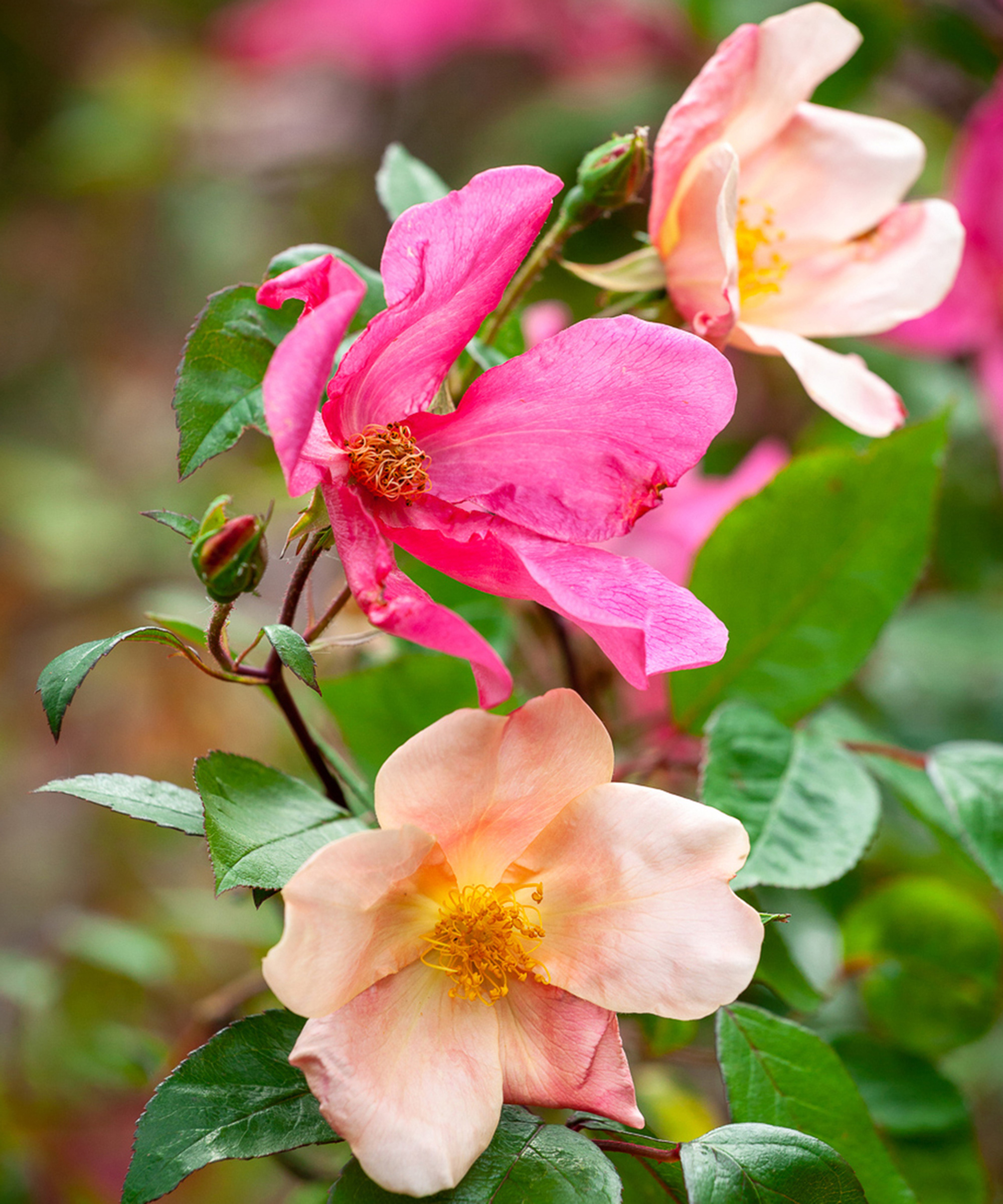
'January is the best time for planting bare root roses,' says Sarah. 'If the weather is mild and the ground isn't frozen or waterlogged, they can be planted out straight away.'
She suggests the China rose, Rosa x odorata 'Mutabilis' – it's super-healthy and exceptionally long-flowering. 'When planting, soak the root in a bucket of water for an hour or so and, just before planting, scatter Rootgrow – mycorrhizal fungi – generously over the roots which will help to establish the rose more quickly.'
Rosa glauca syn. Rubrifolia is another border favorite of Sarah's. It's grown for its silvery fine foliage and hips, rather than its flowers, she explains. 'The young growth is a coppery-mauve on purple stems, turning to a soft pewter as it matures. Single form flowers have a wild rose appearance, in deep magenta and white, and are followed by deep orange hips that last through winter.'
With so many different types of roses available, it's worth spending some time choosing the best one for your garden. 'Most roses look best planted in groups of three of the same variety,' Sarah adds.
Top tip: 'Allow newly planted roses to settle in for a few months before underplanting with salvias, which release a natural fungicide into the air to help combat blackspot,' says Sarah.
13. Rose milkweed
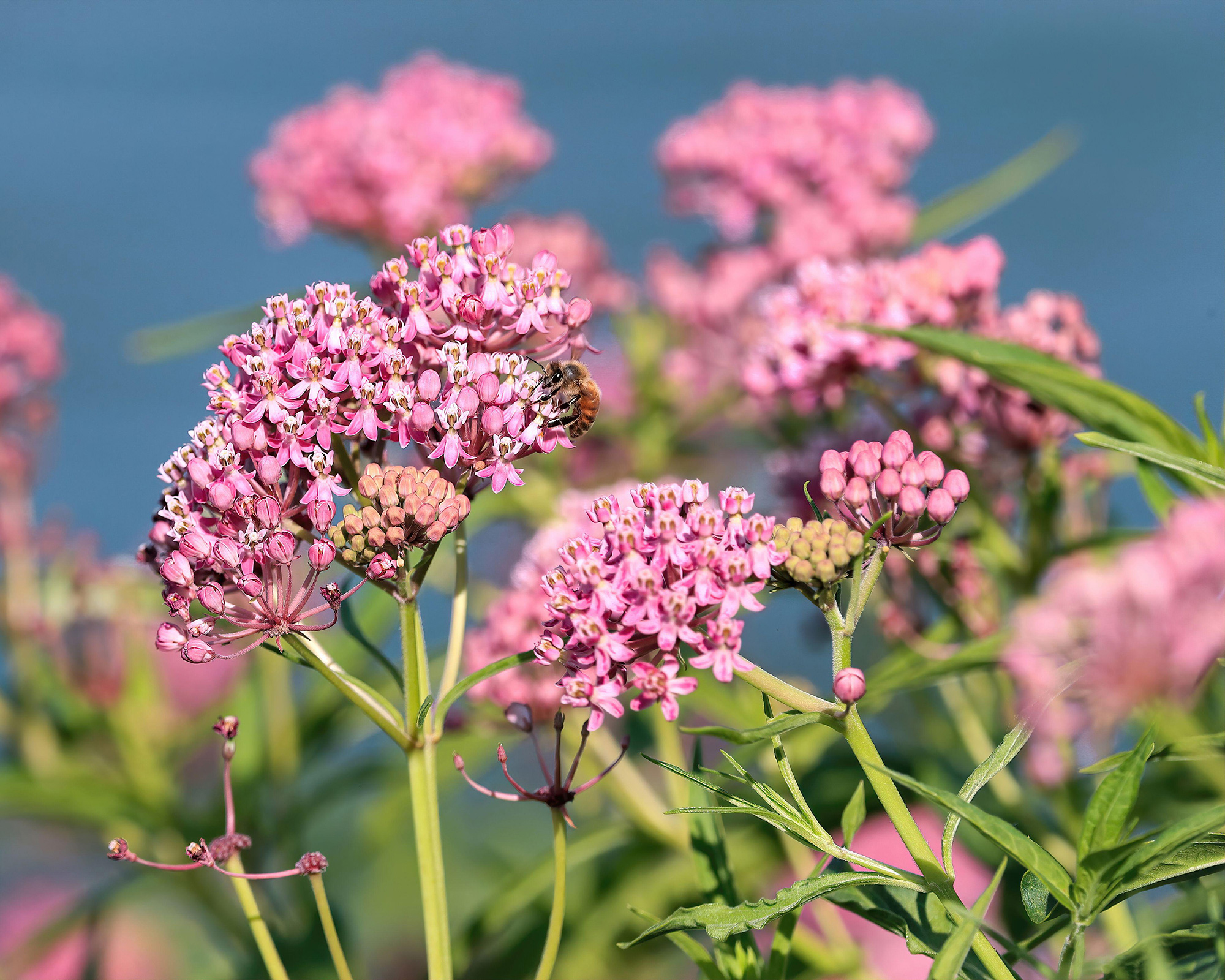
Rose milkweed (Asclepias incarnata) is an absolute magnet for pollinators, says Sarah Raven. 'The clustered umbels of lilac-rose buds, opening white, will attract butterflies, hoverflies, and bees from all over.' It can be planted now as a bare root perennial.
'The plant is upright with delicate, slender willow-like leaves, thriving in sunny sites with plenty of moisture.' They're a good choice for planting near your garden pond.
Top tip: Like all bare root perennials, this should ideally be started in a pot and then transferred into the ground in spring, Sarah advises.
14. Viburnum

Garden shrubs can be overlooked, but they provide structure to a garden, and many have gorgeous flowers, and even berries, too. Plant viburnum and you'll soon realize it's a valuable addition.
Viburnum opulus 'Roseum', otherwise known as the Snowball Bush, is Sarah Raven's favorite foliage plant for late spring and early summer picking. From early May, it's covered in bright, acid-green flowers and elegant, indented leaves. 'As the flowers mature, they move through creamy-green into pure white.'
She advises digging a hole deep and wide enough to cover the root ball. Then, sprinkle mycorrhizal fungi into the planting hole and around the root ball before positioning the plant in the hole. 'Backfill with topsoil and firm down gently around the plant. Water generously and mulch with compost or well-rotted manure to help retain moisture.
'When you pick a branch or a few, sear the stem end in boiling water for 20 seconds to make the flowers last well in a vase,' Sarah adds.
The team at Squire's Garden Centres also recommends Viburnum tinus – a 'great type of viburnum for early color', with its glossy evergreen leaves and creamy white flowers throughout spring.
Is it too late to plant bulbs in January?
Ideally, planting bulbs for spring should be done in autumn. But if you forgot, or simply ran out of time, there's no need to despair. You can still have success with January plantings.
As long as the ground isn't frozen hard, you can plant them – but do it as soon as you can. According to expert gardener Monty Don in an article in The Guardian, tulips are very comfortable being planted this late. However, narcissi and crocus will generally perform better in their second season if planted later than November.
Of course, there are summer bulbs to think of as well, but wait a little longer before planting these. They should go in when the weather is warmer and the risk of frost has passed.


The garden was always a big part of Holly's life growing up, as was the surrounding New Forest where she lived. Her appreciation for the great outdoors has only grown since then. She's been an allotment keeper, a professional gardener, and a botanical illustrator – plants are her passion.
- Ruth HayesGardening editor, Amateur Gardening magazine
